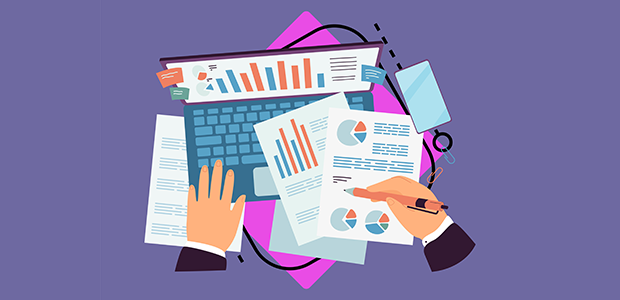
Preparing for 'Making Tax Digital' for income tax
The government’s Making Tax Digital (MTD) scheme for Income Tax Self-Assessment (ITSA) is set to come into effect next April 2026, and whilst that might seem a while away, sole traders should start planning now to minimise any financial strain. The crux of the initiative is in its name; the government is making all tax reporting and filing a digital process.
This initiative has been introduced in waves, with MTD for VAT already introduced in April 2019 for all business above the VAT threshold, and extended to all VAT-registered businesses by April 2022. MTD for ITSA has experienced multiple delays, with its rollout originally planned for 2018.
MTD scheme for ITSA – what do you need to know?
The initiative for ITSA has finally been confirmed to launch in 2026, and initially only those who earn more than £50k per year will need to adhere to MTD guidelines. However, this threshold will quickly lower to include those earning just £20k per year by 2028. In light of this, all sole traders should pay close attention to the scheme and take the necessary steps to proactively prepare for this shift.
The long-term goal of this is to increase taxpayer engagement, improve compliance and encourage digital record keeping. Perhaps the most pivotal shift, is that instead of filing a singular year-end declaration, sole traders will now be required to submit quarterly updates. This shift to real-time reporting will immediately impact cash flow strategy and budgeting, forcing sole traders to re-strategise how they manage their finances.
MTD is set to be introduced from 6 April 2026 (2026/27 tax year), and it will apply to individuals with qualifying income over the following thresholds:
- 2026/27, £50k per year
- 2027/28, £30k per year
- 2028/29, £20k per year
This threshold is applied to the figures reported on your tax return from two tax years before. To work out which band you sit in, calculate the sum of both your self-employed income and property income, before the deduction of expenses (for example, the 2026/27 threshold of £50k will apply to the income reported on your 2024/25 tax return).
This means that sole traders can know whether MTD for ITSA applies to them prior to the start of the tax year – so there’s really no excuse to not plan ahead.
As mentioned, the most important change introduced by MTD is the increased reporting cadence. Whereas previously, tax returns used to take place on an annual basis, MTD will see a shift to quarterly reporting which means sole traders will need to be much more on top of their finances to meet the following deadlines:
- Quarterly update 1 – 6 April to 5 July, deadline to file is 7 August
- Quarterly update 2 – 6 April to 5 October, deadline to file is 7 November
- Quarterly update 3 – 6 April to 5 January, deadline to file is 7 February
- Quarterly update 4 – 6 April to 5 April, deadline to file is 7 May
It’s worth noting that you can adjust these dates to make a ‘calendar quarters election’ if needed, where the first quarter would run from 1 April to 30 June, the second from 1 July to 30 September and so forth. While the filing deadlines would not change, this approach would suit those who are already filing quarterly VAT returns.
The total tax due will be calculated from the year-end declaration, and the usual 31 January filing deadline will still apply. Where applicable, payments on account will be payable on 31 January and 31 July as before.
Why does this matter for sole traders?
On paper, the initiative presents itself as just an administrative burden. However, without proper planning measures in place, sole traders are at risk of incurring unnecessary costs during this transition period. With increased reporting, you’ll need to ensure records are kept up to date in real time and set aside funds to cover your tax bills more regularly. On top of this, you’ll need to set up a new MTD compliant software and make sure to avoid any late or incorrect submissions, as after one late filing warning you risk incurring a £200 penalty charge. HMRC provides a list of approved software options that are worth taking a look through.
The financial risk during this transitionary period is clear, and especially for those in early business developments stages looking to scale, additional costs are not ideal. However, with proper planning, you can minimise the financial and administrative burden of MTD.
If you’re already eligible for MTD for ITSA, there’s a pilot programme you can join to adjust, and this is a good way to proactively get ahead of the curve and familiarise yourself with this new reporting process.
For more startup news, check out the other articles on the website, and subscribe to the magazine for free. Listen to The Cereal Entrepreneur podcast for more interviews with entrepreneurs and big-hitters in the startup ecosystem.

